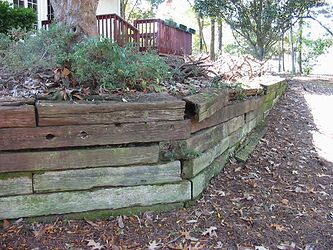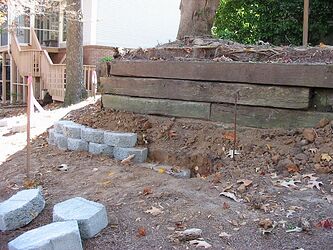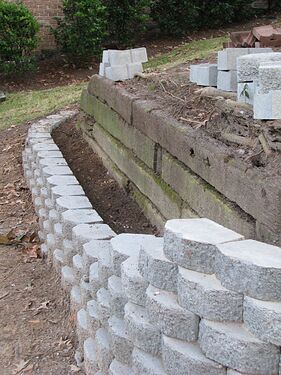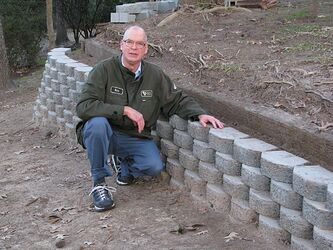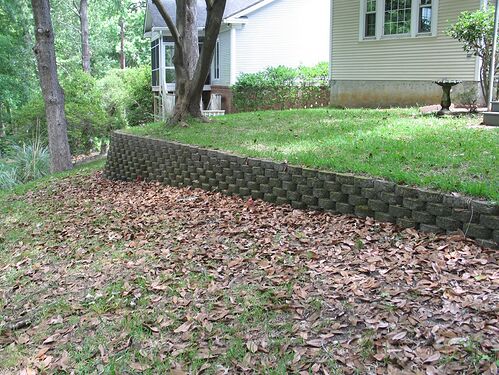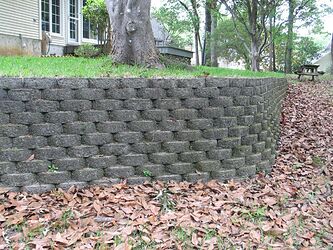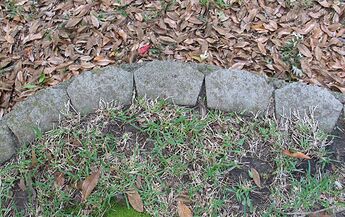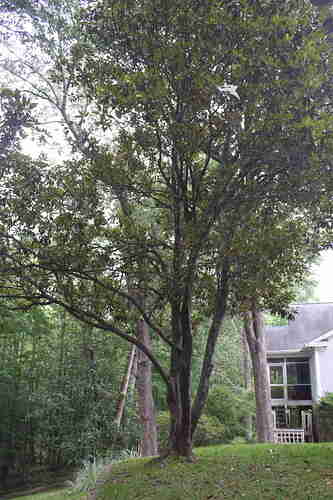In 2007, on another engineering website I discussed proposed repairs to an existing retaining wall (shout-out to PEinc for excellent advice). The deteriorating RR cross tie wall was in our backyard, located in South Carolina coastal region. Here is a photo from that time:
Wood wall was chevron-shaped, about 60 feet long, and varied in height from 1 ft. at one end, to 3.5 ft. at the chevron point, back to 1 ft. at the other end.
Decided to leave the existing wall in place and construct a concrete gravity segmental wall in front of the existing. This seems to be an out-of-the-ordinary use of a gravity retaining wall… hence this report on its’ long term performance. Photo shows work just beginning at point of the chevron:
Another photo with work well underway:
And, a 2008 photo near completion, including the “Design-Build Engineer-Contractor”:
Here are couple of current photos, 15 years after completion:
The wall has required no maintenance and does not appear to have deflected or settled. No special provisions (like added weep holes or slotted pipes) were used for drainage, just compacted granular “fill dirt” between new and old walls. I assumed that the “pointed” shape of the block edges would allow all vertical joints between blocks to drain. In the past 15 years we have had several record rainfall events associated with hurricanes. In 2015, one of these exceeded 500-year rainfall. After heavy rains, water seeps out of the whole wall face… drainage between blocks appears to work.
Here is a photo showing the “pointed” block shape which also allow curves in the wall:
There has been an unexpected benefit. Before project, we frequently saw snakes, including copperheads in the back yard. Soon as the project was completed, majority of the snakes were gone. Assume the snakes were living in the deteriorating wood wall.
